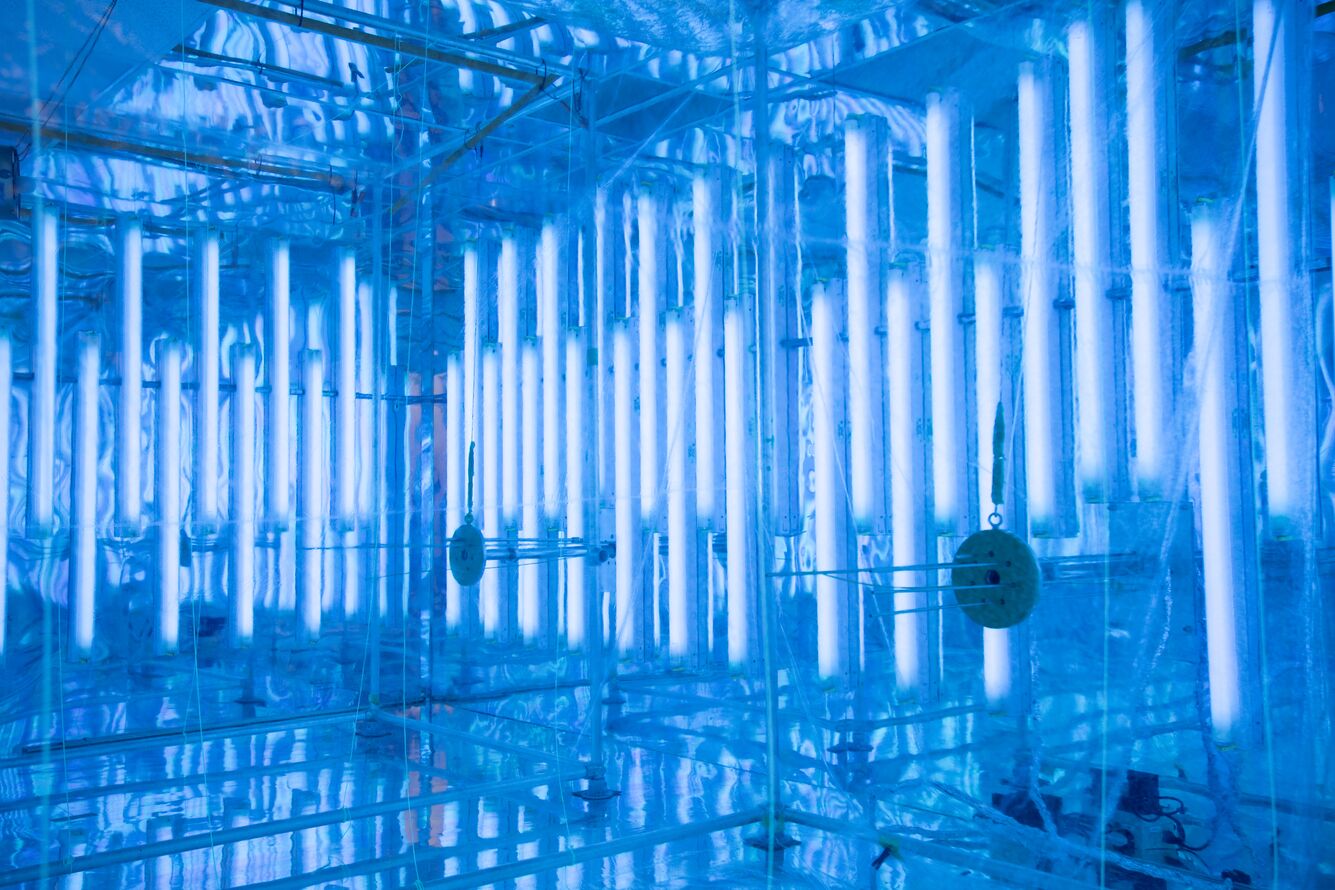Atmospheric Measurements Laboratory
Understanding atmospheric processes through measurements

Atmospheric researchers John Shilling (left) and Yuzhi Chen adjust a device used in the Atmospheric Measurements Laboratory's environmental chamber.
(Photo by Andrea Starr | Pacific Northwest National Laboratory)
The Atmospheric Measurements Laboratory (AML) is one of the nation's leading research facilities for understanding aerosols, clouds, and their interactions. The facility is located on Pacific Northwest National Laboratory’s (PNNL's) Richland, Washington campus.
Within the AML are multiple aerosol and cloud chambers, including the environmental chamber and ice nucleation chambers. The environmental chamber is an advanced continuous-flow Teflon chamber with ultraviolet lights that mimic sunlight, allowing scientists to simulate, in controlled conditions, the chemical reactions and microphysical processes that occur in the natural atmosphere. Chamber research is focused on understanding the life cycle of organic aerosols, including their formation, growth, aging (oxidation), re-volatilization, and their impact on cloud formation. The data generated helps reduce the uncertainty associated with representing the organic aerosol life cycle in climate models.
The ice nucleation chambers enable researchers to investigate how aerosol particles influence ice nucleation, an important and poorly understood process in clouds found at high latitudes or high in the atmosphere. Under strict temperature and humidity conditions, these chambers provide new information on the specific aerosol particles that can lead to the formation of these clouds. AML has ice nucleation chambers that can be cooled down to –50 °C (–58 °F) and possess state-of-the-art optical techniques to detect the moment when droplets freeze.
The AML has three different radar laboratories, two indoor areas, and an outdoor radar yard. Staff at PNNL maintain radar equipment between field deployments and use the spaces to maintain, test, calibrate, and repair instrumentation before field campaigns. The data from these campaigns, and current radar activities, can be found at the Atmospheric Radiation Measurement user facility website.
Staging areas at the AML are used for ancillary and aircraft instrumentation and radiometric tools. This allows researchers to calibrate and test a wide range of instruments before field deployment.
